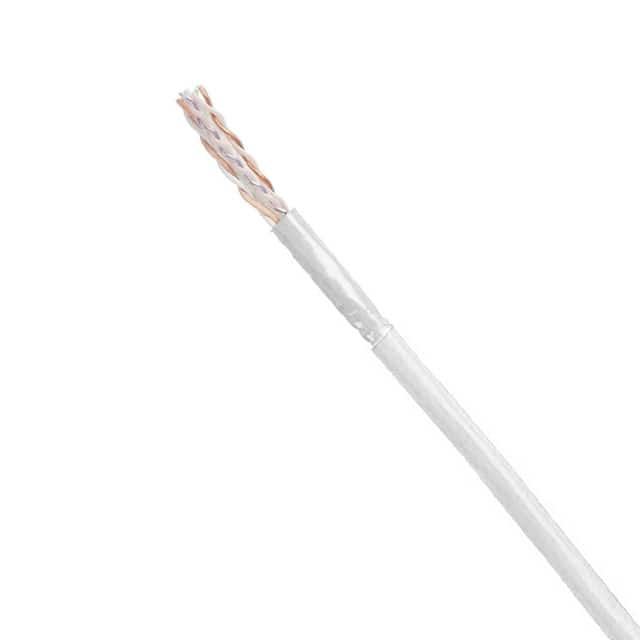Ⅰ. The characteristics and applications of Cables, Wires
Ⅱ. What are the common types of cables and wires?
Ⅲ. What are the common sizes and types of cables and wires?
The characteristics and applications of Cables, Wires
Cables and wires are essential components of electrical and electronic systems. Here are some common characteristics and applications of cables and wires:

Characteristics:
Size: Cables and wires come in various sizes, ranging from very thin to very thick, depending on their intended use and the amount of current they are designed to carry.
Conductor Material: Cables and wires can be made of different conductor materials such as copper, aluminum, or silver, with copper being the most commonly used due to its excellent conductivity.
Insulation: Cables and wires are typically insulated with materials such as PVC, Teflon, or rubber to prevent electrical shorts and ensure proper insulation resistance.
Voltage Rating: Cables and wires are designed with different voltage ratings to ensure that they can handle the specific voltage levels of the application they are used in.
Shielding: Shielding is used in cables and wires to protect against electromagnetic interference (EMI) and radio frequency interference (RFI) from external sources.
Applications:
Power Transmission: Cables and wires are used to transmit electrical power from a source to a load. Power cables are typically used in high voltage applications such as power distribution systems.
Telecommunications: Cables and wires are used in telecommunications systems to transmit data signals between devices. Examples include Ethernet cables and fiber optic cables.
Automotive: Cables and wires are used in automotive applications for connecting various electrical components, such as batteries, starters, alternators, and sensors.
Aerospace: Cables and wires are used in aerospace applications for connecting electrical systems and components in aircraft, satellites, and spacecraft.
Consumer Electronics: Cables and wires are used in consumer electronics products such as smartphones, laptops, and televisions, where they provide connections for charging, data transfer, and other functions.
Overall, cables and wires are critical components of electrical and electronic systems, providing the necessary connections for power and data transmission. They are designed with different characteristics and applications in mind, ensuring that they can perform reliably and efficiently in a wide range of environments and conditions.
What are the common types of cables and wires?
Some common types of cables and wires include:
Coaxial cable: used for transmitting television signals and broadband internet.
Ethernet cable: used for connecting devices to a network.
HDMI cable: used for transmitting high-definition audio and video signals.
Power cable: used for transmitting electrical power.
USB cable: used for connecting devices to a computer or charger.
It's important to choose the right cable or wire for the task at hand, as using the wrong type can result in poor performance or even damage to equipment.
What are the common sizes and types of cables and wires?
Cables and wires come in various sizes and types, each designed for a specific purpose. Here are some common sizes and types of cables and wires:
Sizes:
18 AWG: This is a common size for low-voltage applications such as automotive and consumer electronics.
14 AWG: This is a common size for higher voltage applications such as household wiring and some industrial applications.
10 AWG: This is a larger size typically used for high-power applications such as industrial machinery and some electrical distribution systems.
4/0 AWG: This is a very large size typically used for high-current applications such as electrical distribution systems.
Types:
Copper Wire: Copper wire is a common type of wire that is highly conductive and commonly used for electrical applications.
Aluminum Wire: Aluminum wire is a lighter and less expensive alternative to copper wire, but it is not as conductive and can be more prone to corrosion.
Steel Wire: Steel wire is a strong and durable type of wire commonly used for mechanical applications such as wire ropes and cables.
Fiber Optic Cable: Fiber optic cable is a type of cable that uses thin strands of glass or plastic fibers to transmit data signals over long distances.
Coaxial Cable: Coaxial cable is a type of cable that consists of a central conductor surrounded by a layer of insulation, a metallic shield, and an outer jacket. It is commonly used for television and internet connections.
Shielded Cable: Shielded cable is a type of cable that has a layer of shielding to protect against electromagnetic interference.
Twisted Pair Cable: Twisted pair cable is a type of cable that has two or more insulated wires twisted together to reduce electromagnetic interference.
Selecting the right type and size of cable or wire is critical to ensuring that it can handle the electrical requirements of the application, perform reliably, and meet safety standards.



